Time to experiment.
 Coinscratch
Posts: 10,267 ✭✭✭✭✭
Coinscratch
Posts: 10,267 ✭✭✭✭✭
This Morgan is labeled with artificial toning. so, If a crack it open and dip it will it receive a real grade? sorry for the bad pics I am driving ![]()
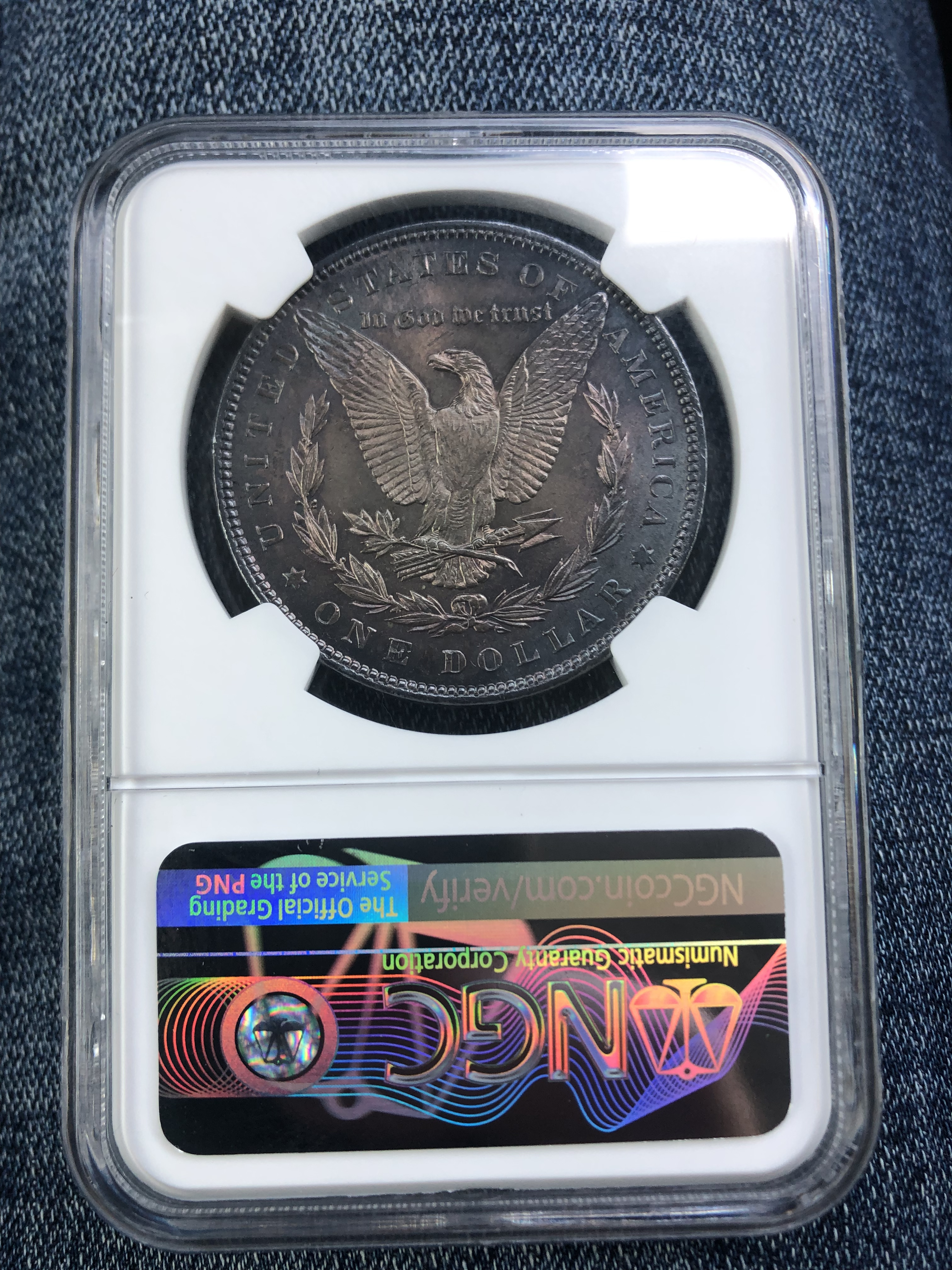
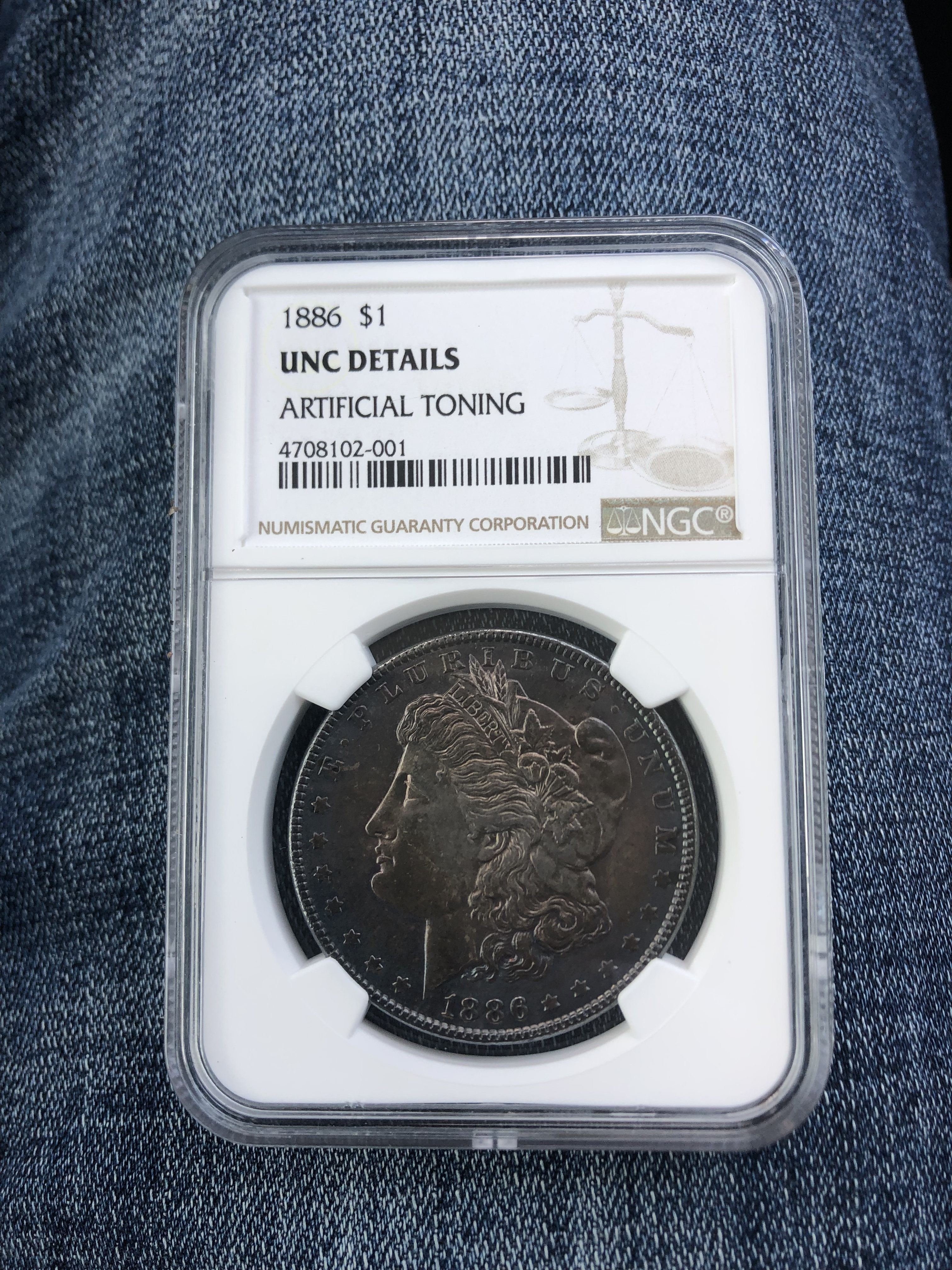
0
Best Answers
-
 TomB
Posts: 22,381 ✭✭✭✭✭
TomB
Posts: 22,381 ✭✭✭✭✭
It may be AT because someone was trying to hide a patch of hairlines, a scuff, some smoothed surfaces or another impairment. You may end up with a white or near-white coin that is gradable, but you also might end up with a white or near-white coin that has other, now more visible issues.
11 -
 Hemispherical
Posts: 9,370 ✭✭✭✭✭
Hemispherical
Posts: 9,370 ✭✭✭✭✭
The artificial toning sure did cover-up a lot of scratches (and gouges).
Possibly, details, code 95, scratches.
Also, what is up with the obverse rim at about 2-3 o’clock.
5
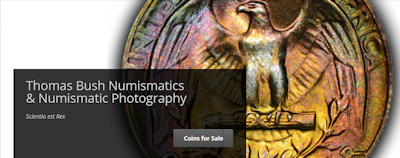
Answers
Probably Not. Black is not beautiful. This coin will be ugly if dipped as the surfaces look etched. I'll also bet many will disagree that the toning is artificial.
It would be interesting to find out what or how the AT was applied.
Since you asked the question you are probably leaning toward the crack out, dipping, and resubmitting.
If you do, please, keep a pic log and keep us updated. We all would like to know how it turns out.
In my opinion, it is way too dark to come out nice. Dip works well for light tarnish and if it's done quickly with a proper rinse afterwards... anything stubborn or prolonged will just strip away the mint luster and leave it dull and lifeless.
I sorta like the look of the reverse.
Click on this link to see my ebay listings.
@Insider2 I see what ya'll are saying but I don't want to re-submit twice as there is no way it is worth it. @Hemispherical I will probably dip just to see what happens and will post pics later this evening. @Meltdown I like the reverse as well there is some contrast going on there but inquiring minds have to know. @TomB It will be interesting to see if that is the case.
Please post before and after pictures ( a 'before picture when cracked out)....and let us know what you use to remove the tarnish... You might give the baking soda/aluminum foil method a try.... Good luck... Cheers, RickO
Sorry
Looks like some wear or a weak strike around the ear.
I suspect that the AT is hiding something. This is a low cost coin to experiment on with minimal downside, I say go for it. If the toning doesn't come off with acetone or similar, you could try a very diluted dip to make it go slower and more controlled.
Remember those safety glasses when cracking these.
Collector, occasional seller
@ChrisH821 . I use large wire cutters on the edges and under a towel. And then pull apart. I don't trust my hammering so much.
I realized after the dip that I was using gold dip, apparently I threw out the silver type a while back because it was old.
@Meltdown is right about being too dark to come clean and/or the wrong dip doesn't work.
Nonetheless it looks worse.
@Insider2 . The edges are toned, is this a clue as to being AT?
Before.
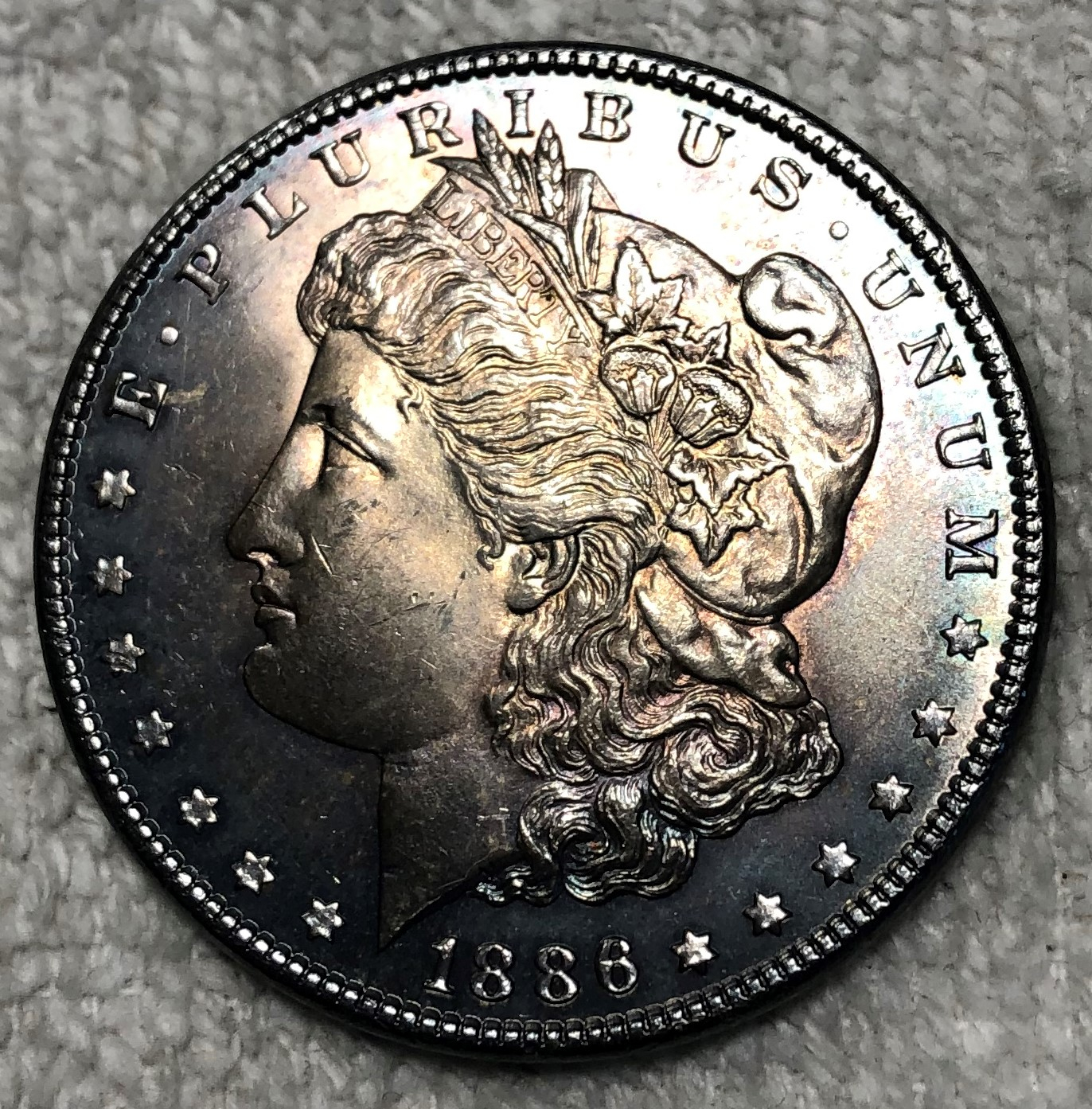
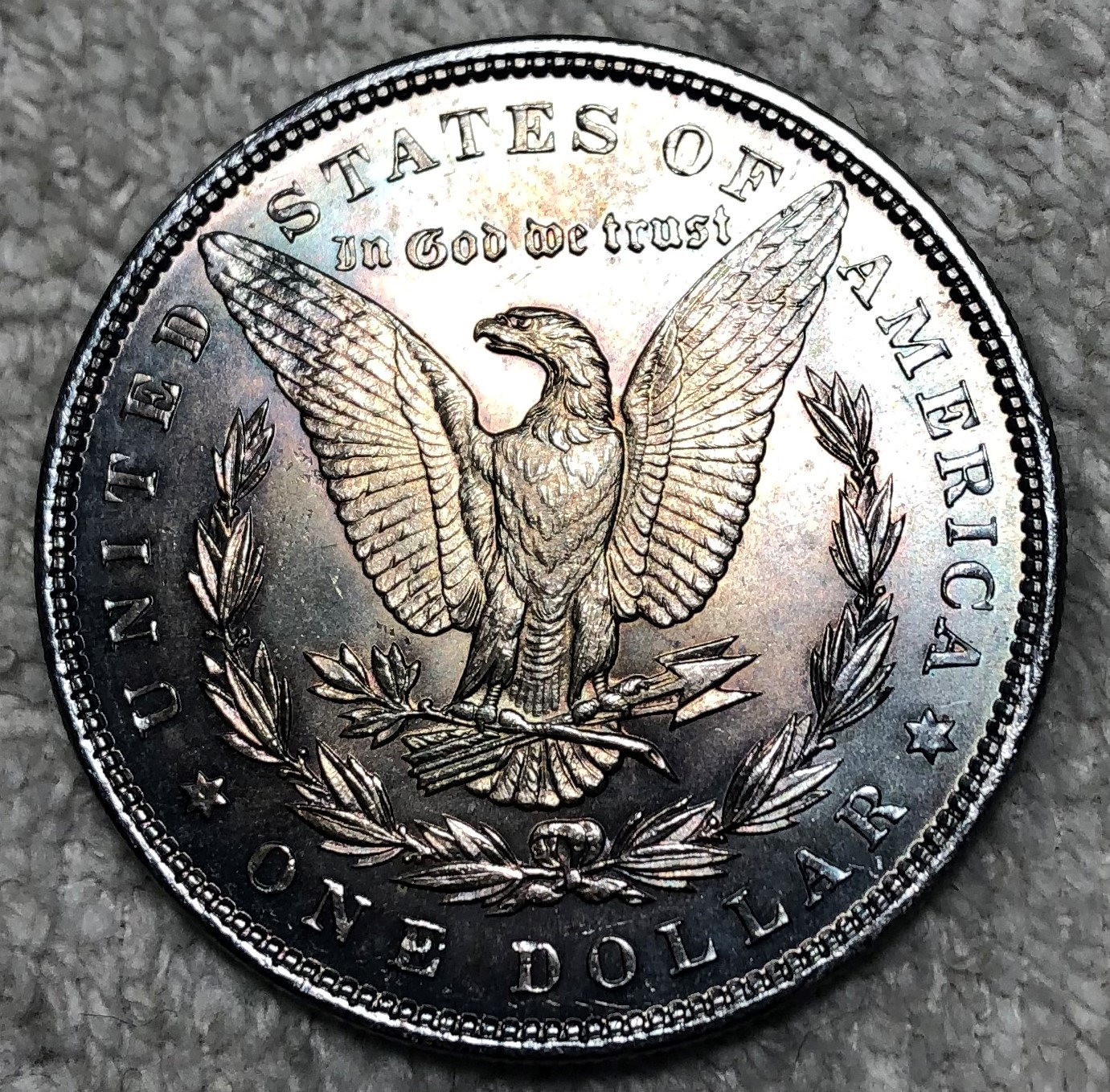
After.
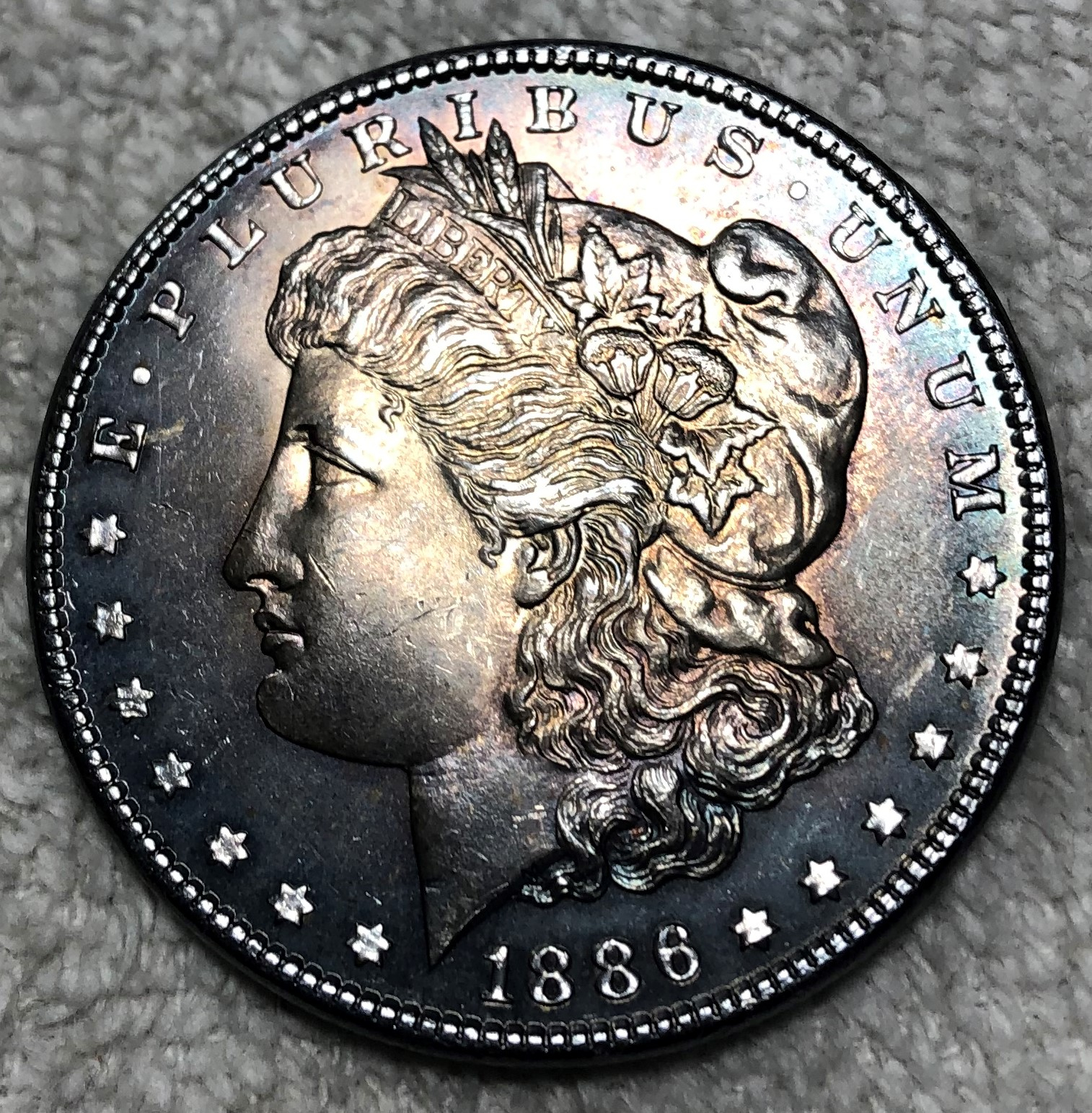
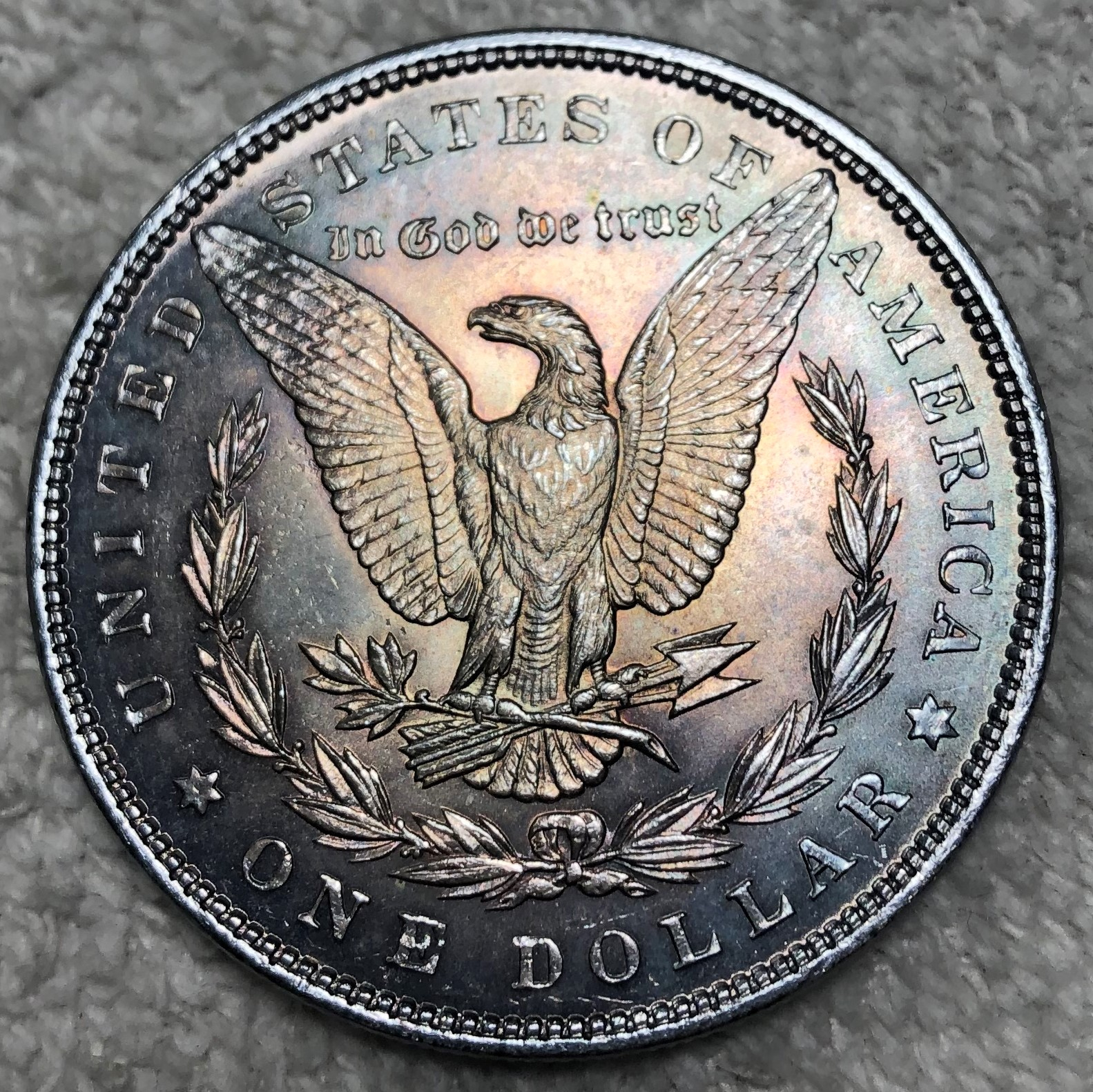
5 seconds had no affect so I gave it 7 more.
Are those newest shots before, after or during?
In honor of the memory of Cpl. Michael E. Thompson
Top 2 are before and bottom 2 are after, it is a bit lighter and so you can't tell much from them.
If it will grade I'm guessing AU 58.
Well, you always have a silver dollar, so there's that.
``https://ebay.us/m/KxolR5
I've been told that dipping a coin properly consists of several proprietary steps done in a particular order. You skipped all of them and only did the last one - TWICE.
I wish I knew the secrets of the conservation folks. Perhaps you should have sent it to PCGS for conservation.
Not sure were I went wrong: I unwrapped it, kissed it, dipped it, okay twice, then kissed it goodbye
If it was an "S" I would have sent it in as is not daring even cracking it open.
Until I ran into this coin today - I have gotten away from dipping any coin as it usually ends up looking worse.
Okay, back from the store with silver dip this time - That worked! No more artificial toning here.
Any Morgan enthusiasts or otherwise care to give her a grade so I can decide what to do, grade or stack?
Thanks in advance
Another gouge? Will stack it! Correction, tooth mark
It's a 62 at best and so common not worth sending in to me. JMHO.
I never realized how angry those eagles look
Well it went from a value of about $20 pre dip, to a value of about $20 post dip. In many shops you might get offered $15.
An honest experiment.
``https://ebay.us/m/KxolR5
Are you asking me or Dimeman? If me, I thought there might be something good not bad hiding behind the AT.
This shop has two more of them in different years I may go back and fetch.
Looks much better. The AT wasn’t hiding anything. Successful experiment.
I prefer the coin post-dip. I thought dip was something more specialized than jewelry cleaner.
LIBERTY SEATED DIMES WITH MAJOR VARIETIES CIRCULATION STRIKES (1837-1891) digital album
Well, I like toning but not artificially but I too prefer the original luster when its a high grade and the coin is blinding. And I'm sure there is a better way I just haven't yet purchased the correct solution. The active ingredients in both are probably the same. However, someone like @jmlanzaf or @MFeld could shed some light on the subject.
I would steer clear of jewelry or silver polish as "dip". They are not trying to preserve luster and most likely are just stripping the surface away.
In general, there are two ways to restore a tarnished surface:
@Insider2 mentioned the aluminum foil/baking soda. This is an attempt to chemically reduce the oxidized silver back to silver metal. Tarnish is a chemical "oxidation", meaning the silver metal gets turned into a positive ion and bonded to a negative ion like oxygen or sulfur, usually. You can only do an "oxidation" if it is couple to a "reduction": some other chemical species gets made more negative. Essentially, an electron moves from the silver to the other species.
So, if you add Aluminum and backing soda, the aluminum metal gives electrons back to the positive silver ion, turning it back into silver metal. At the same time, the aluminum ends up tarnished.
For very light tarnish, you should see almost no change in the surface from the day it was minted. For heavy tarnish, you will likely see some microscopic roughness from the surface rearrangement of atoms.
If you use jewelry or silverware cleaner, they normally are just acidic solutions that strip away the surface layer. This may not be noticeable for very light tarnish and very short exposure. But for heavier tarnish or longer exposure, I guarantee surface modification.
I pulled the MSDS on your jewelry cleaner. Unsurprisingly it is thiourea and sulfuric acid.
By the way, for anyone still reading. You should be able to prevent toning completely by putting the coin in contact with a magnesium strip. [Google "sacrificial anode" if you want more info, or PM me.] I've often wondered if you could prevent milkspots this way.
Note to PCGS - have you ever thought of a super duper holder with an embedded magnesium strip?
All comments reflect the opinion of the author, even when irrefutably accurate.
...In my experiences...the dip he used in the 2nd go around is probably the finest coin dip one can find...just gotta be quick or be dead
Use of polish formulated for .925 sterling silver was never intended for .900 coins. The introduction of sulfuric into the mix is, as previously suggested, strongly contraindicated except in extreme circumstances.
The conservation process is usually begun with less is more, even if you end up at all.
Protocol demands that you start with water and titrate the acid to effect very minimal change. At that point more strengthening of the acid-content of the "dipping" solution can begin. Since sulfuric has corrosive properties more powerful than thiourea (check those electron pairs), it's overkill from minute #1, and especially problematic on pre-steam-press silver.
...holy sh*t...did my ignorance just bring The Colonel back to the boards??? Hell Yeah!
@ColonelJessup
I hope you are writing all this down somewhere in one place!
@3keepSECRETif2rDEAD . Yea. I have been missing his rants of late - Kinda boring w/o you buddy
So, just to be clear - A homemade aluminum foil bowl add water and baking soda say 50/50 and let it soak a few minutes?
I make these all the time for grilling fish & giving electrons back to the snapper could explain the red residue left on the foil
OR
Dilute the silver dip and proceed cautiously.
@jmlanzaf E Z Est coin "cleaner" also contains thiourea and sulfuric acid.
https://aervoe.com/_files/msds/EzEst Coin Cleaner 1985 - US Bulk.pdf
The dips were brought up in another discussion a while back here https://forums.collectors.com/discussion/comment/12242664/#Comment_12242664
Collector, occasional seller
Yes. EZest is in the same category, although I believe it is more dilute.
As per the other thread, I would always start with acetone or an organic. Where appropriate, MS70 or similar detergent. Then, MAYBE something like EZest. But once you're reaching for that, you are on your way to a full dip. And that can be done safely, but people should be aware of the risks.
All comments reflect the opinion of the author, even when irrefutably accurate.
@jmlanzaf
I agree, although I've found myself skipping the acetone step and going straight for the MS70 where I am confident it will remove surface contaminants. It just seems to remove everything that acetone will anyway, plus more.

Here it is saving a 1941 Proof Walker
Collector, occasional seller
The organic solvent should remove things the water based solvents don't and vice versa. I'm not suggesting you MUST use acetone. It's just that the acetone is least likely to have any negative affects so it is a safer 1st step.
All comments reflect the opinion of the author, even when irrefutably accurate.
@ChrisH821 I like that '41
Thanks! So did PCGS, it graded 67.
https://www.pcgs.com/cert/37135720
Collector, occasional seller
Very nice indeed!